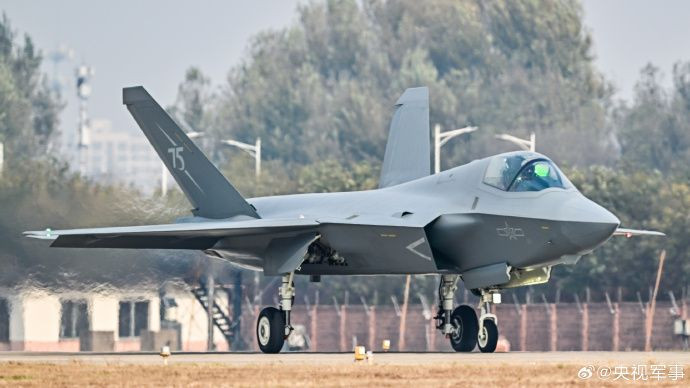China is poised to reveal its newest stealth fighter, the J-35A, at the Airshow China 2024 in Zhuhai from November 12 to 17. This unveiling marks a significant step in Beijing's push to elevate its military capabilities, especially in aerial warfare, where it seeks to rival the U.S. and its advanced stealth technology.
The J-35A, shown to the public in an image released by China's air force during a recent press conference, will debut alongside China's other high-profile assets, including new reconnaissance drones and surface-to-air missile systems. The event aligns with the 75th anniversary of the People's Republic of China and the People's Liberation Army Air Force (PLAAF), a symbolic occasion underscoring the nation's military advancements.
The J-35A, developed by Aviation Industry Corporation of China (AVIC), represents China's second fifth-generation stealth fighter, joining the J-20, which entered service in 2017. This dual-stealth capability positions China as the only country besides the United States to field two distinct stealth fighters. While the J-20 is designed for air superiority and is a heavyweight fighter similar to the U.S. F-22, the J-35A is a more versatile, medium-sized aircraft closer in design to the U.S. F-35, capable of both air combat and air-to-surface strikes.
Though details on the J-35A remain sparse, the design reportedly emphasizes stealth, with a tailplane configuration aimed at evading radar detection. According to Carl Schuster, a former director of operations at the U.S. Pacific Command's Joint Intelligence Center, "The J-35A is expected to feature more advanced engines, enhancing its operational range and power."
Chinese military experts suggest the J-35A is slated for the PLA Navy, potentially to be deployed on the country's aircraft carriers, such as the Liaoning and Shandong. Carrier-based versions are expected to incorporate wing-folding capabilities, allowing for easier storage on carriers with limited space. China's first stealth fighter intended for aircraft carriers, the J-35A could soon join the ranks of China's carrier fleet, potentially rivaling the U.S. Navy's carrier-based F-35C.
The J-35A's development has been shadowed by accusations from the United States, alleging that China acquired stealth technology through espionage, claims which Beijing denies. Nonetheless, the J-35A's appearance underscores China's drive to match Western military capabilities.
While the PLA is tight-lipped about the technical details, reports from Chinese state-run outlets suggest the aircraft has completed rigorous testing and meets safety and reliability standards. A recent image of the fighter displayed the number "75" on its tail-a nod to the PLAAF's 75-year history-hinting at its status as an official addition to China's military assets.
The aircraft's unveiling coincides with China's regional military buildup, with over 70 J-20 fighters added to the PLA's operational fleet over the past year, according to open-source intelligence reports by Janes. Analysts note this accelerated expansion could bolster China's "forward theater commands" in contested regions.
In addition to its technological strides, the J-35A represents China's ambitions to appeal to a broader international market. The FC-31, an export version of the J-35, has already attracted interest from Pakistan, whose pilots have reportedly begun training on the aircraft. By offering stealth fighters like the J-35A at a more competitive price than its Western counterparts, China could challenge the global dominance of the U.S. F-35, especially in markets restricted by stringent U.S. export controls.
Beyond the J-35A, the Zhuhai airshow will feature displays of advanced technology from 49 nations. Notably, Russia's Su-57 stealth fighter, developed by Sukhoi, will be showcased as a testament to China and Russia's evolving military alliance amid heightened tensions with the West. Observers see this as a calculated message from Beijing, underscoring its expanding defense partnerships and commitment to advancing its own military strength.






